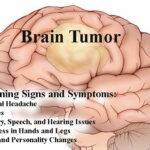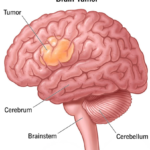Cerebral Aneurysm also called as Brain Aneurysm arises from an abnormal focal dilation of an artery in the brain. They enlarge with time and burst with slightest strain causing massive bleeding. Chinese President Xi Jinping is reportedly suffering from this – a potentially life-threatening condition.


Subarachnoid haemorrhage is a severe form of brain haemorrhage that occurs around the brain substance normally within the subarachnoid space. Subarachnoid space is a thin space between arachnoid membrane that covers the brain and the brain substance. In this space normally all the major blood vessels of the brain traverse to different locations. Any leak of blood from these vessels into this designated space is called SAH.
What is the cause?
Majority of the times it is caused by an abnormal local enlargement on these blood vessels which eventually rupture called “Aneurysm”. These are localized enlargements like berries on these blood vessels. They enlarge with time and burst with slightest strain causing massive bleeding. They can be singular or multiple or identical on both sides called mirror aneurysms.
How does it develop?
Most of them are from birth or occur in later part of life due to weakness or thinning if the vessel wall that increases in size and with time due to flow dynamics. Depending upon the size and the rate of enlargement they can rupture any time. Some remain as it is and are diagnosed by scans done for some other purpose called “Incidental or Unruptured Aneurysms”. These are of importance that these aneurysms grow with time and eventually rupture with time. So it is important to treat such incidental aneurysms before they really rupture. The outcomes are much better when we treat before they really burst.
How do they rupture?
They are like small time bombs in the head in a literal sense. As the blood is flowing through the vessel it enters the aneurysm causing turbulence within. This in turn will slowly enlarge the aneurysm like a balloon and also make the vessel wall thinner with time. Beyond a particular level of stretching the vessel wall gives way either due to blood pressure or by any physical strain, straining in the toilet for hard motion or during coitus making them rupture. Once aneurysm ruptures it can bleed considerably inside the brain. At times bleeding can be so severe causing an instant death. So a good number of subarachnoid haemorrhage patients do not reach the hospital.
The risk of re – rupture persists while on transport or even after reaching the hospital, till it is treated. Therefore they need to be treated as an emergency as early as possible. The primary goal is to prevent bleeding from the ruptured aneurysm. Soon after the rapture body tries to protect by forming a clot around the aneurysm. But this clot cannot prevent re-bleeding nor give total security. So it is mandatory to identify the aneurysm and seal it before it bleeds again. If unfortunately bleeds second time the life risk increases by many fold.
How common is this?
This accounts for about 10% of Brain attacks in general. Commonly affects adults, slightly more common in women. It can rarely manifest in childhood.
What are the symptoms?
Presentation of a ruptured aneurysm is classical. Sudden severe headache that has never been experienced before, with vomiting, neck pain and loss of consciousness. That’s why this headache is called “Thunderbolt Headache” or “thunder clap headache”.
How to diagnose?
With the typical history and clinical examination showing neck stiffness is classical to make a diagnosis. CT scan confirms the diagnosis by showing presence of blood in subarachnoid spaces around the brain. The amount of blood, at times helps in guessing the possible location of aneurysm. Cerebral angiography is definitive and gold standard in establishing diagnosis. Angiography gives information about size, shape, location, status of blood flow including presence of multiple aneurysms. It is necessary to study all the blood vessels of the brain in order to identify presence of multiple aneurysms CT Scan of the Brain will provide the quickest diagnosis for Subarachnoid bleeding. Presence of blood in the basal cisterns and around the brain is classical and diagnostic.
What can precipitate a rupture?
High blood pressure, any strenuous work can rupture an aneurysm. However, sudden rupture during sexual intercourse in men and during labour among women is well known.
What is the effect of pregnancy on aneurysm?
Aneurysms are known to enlarge during pregnancy. Mostly due to hemodynamic changes that happens in the 2nd trimester. Increased blood volume and associated high blood pressure is the cause. That’s why rupture is also common in the mid trimester or during delivery due to the physical strain associated. It is preferable to avoid normal labour in such situations.
What should be the IMMEDIATE action?
One can easily suspect this condition by the nature of the headache itself. They should be hospitalised immediately. Once the aneurysm ruptures, there is nothing to hold the bleeding except the nature’s protection by formation of blood clot around. This can give way at any time. That’s why most often they do bleed again within no time. Nearly 20% die instantly with first bleed. The second bleed doubles the death rate further. Hence the patient should be admitted to ICU, immediately, sedated to prevent strain, control blood pressure, provide pain relief, and treat other problems like seizures if present. Prevent a re-bleed by all means, and quickly investigate and treat.
What is the definitive treatment?
Sure way of preventing re-bleed is by eliminating the blood circulating through the aneurysm. This can be done by clipping or coiling based on the character of the aneurysm and the technical feasibility. Rest is mostly medical management.
What is clipping?
It is a definitive obliteration of aneurysm by placing a titanium clip around its neck, so that blood can’t enter into the sack further. This needs an open micro surgery. Neurosurgeon goes through the subarachnoid space and traces the location of the aneurysm and place the clip preserving the parent vessel. Advantage is we can wash out the blood in the subarachnoid spaces at the same time. These clips are permanent and stay inside for life time. Titanium clips do not interfere with future investigations like MRI.
Will they interfere with future imaging?
Presently these clips are made out of Titanium. They are inert biologically and do not react with the body. Only when we do a CT scan after surgery an artefact can be seen at the site of the clip. These clips are MRI compatible. One can undergo MRI safely after aneurysm surgery. However it is worthwhile informing the radiologist at the scan centre before the imaging starts.
What is coiling?
Coiling is an Endovascular treatment, where in a special coil is deployed into the aneurysmal sac or cavity to obliterate the aneurysm completely. This is done through angiography by using specialised catheters. Neurovascular lab and trained Endovascular specialist is mandatory. Advantage of this is no open surgery. This can be done for all aneurysms and in all age groups except in some special locations and types due to the technical difficulties.
What are the advantages of coiling?
It is a minimally invasive procedure. This avoids open surgery. Aneurysms in the critical areas of the brain can be treated. Age is no bar. Coiling can be done as early as possible, even in persons whose conscious levels are altered or not normal.
Can they be used for all Aneurysms?
Now a days most sophisticated catheters and coils are available. Majority of the aneurysms can be treated by coiling. There may be few technical reasons that one may defer this and prefer clipping. Nevertheless every aneurysm is different and the plan of treatment should be decided based on the individual merits. Often it is tailor made based on many factors. What are the Giant Aneurysms? As the name suggests they are big aneurysms more than 1 centimetre, sometimes can be huge in size. They are more common in women and in children. By virtue of their size they often behave like tumors causing progressive neurological problems or epilepsy. At times blood clots develop within the sac causing multiple strokes. Rarely they do rupture.
How to treat Giant Aneurysms?
Bigger the size of the aneurysm more are the challenges in treatment. Ideally can be treated by Endovascular methods by using flow diverters. If not by open surgery. They are technically challenging and each one need to be dealt with a different strategy. Surgical treatment needs proper planning. The technique depends upon the complexity of the aneurysm.
What are flow diverters?
They are special devices that can be placed inside the blood vessel through angiographic methods. This will divert the blood from entering into the Aneurysm sac so that gradually it will shrink. They are expensive devices. If the giant aneurysm is complex and in a critical location, a planned bye pass to divert the blood flow to the brain and later on surgical occlusion of main vessel itself have to be done to prevent a rupture. At times complex clipping methods are used to reconstruct the blood vessel.
Can multiple aneurysms be treated together?
Yes. More than one aneurysm can be treated in both methods depending upon the patient’s condition. First already ruptured one will be treated always. If accessible it can be done during the single surgery also.
Can aneurysm recur after surgery?
If the aneurysm is treated totally they don’t re occur. But if the occlusion is partial then the residual part might enlarge with time. That should be watched over the years. But aneurysms can occur at a different location. By and large repeat angiogram will detect the presence of any other smaller aneurysms.
What are the incidental aneurysms?
Now a days imaging of Brain has become very common due to the availability of diagnostic facilities. If aneurysm is found before its rupture while investigating for any other reason it is called incidental aneurysms. These require very close follow-up and treatment at an appropriate time. No aneurysm should be neglected are left alone. We now know the natural course of these aneurysms. With time all of them increase in size and rupture eventually. So they deserve a definitive treatment.
Do they require treatment?
Yes. On a long term study we know that every aneurysm enlarges with time till to the point of rupture. We have observed the results are far better if we treat them before they rupture. It is like any other surgery and they can be totally normal. Otherwise every year the risk of bleeding increases, putting them to higher risk over the time. In addition once diagnosed it is a big psychological fear as well. It is like sitting with a time bomb inside the head.
What are infective aneurysms?
Due to the presence of infection in the blood from either septicaemia or infective endocarditis the blood vessel wall itself will get infected. As a result it becomes soft and weak and gradually enlarges becoming an aneurysm. They are also called Mycotic aneurysms. They are generally rare now due to the aggressive treatment of infections and availability of good antibiotics.
What are the rare presentations?
Aneurysms in special locations can present with odd symptoms that can be completely misleading.
1. Sudden onset vision loss in one eye due to ophthalmic artery aneurysm
2. Sudden closing of one eye due to PCOM aneurysm
3. Frozen eyeball due to intra cavernous aneurysm
4. Double vision due to carotid aneurysm at the skull base
5. Bleeding from the nose due to Giant aneurysm eroding the anterior skull base
6. Hoarseness of voice due to vertebral artery aneurysm
7. Facial paralysis due to vertebral aneurysm
8. Facial pain due to Basilar artery aneurysm
9. Intra cerebral clot due to Mycotic aneurysm
Also Read: Brain : The King and a King maker


Dr. NK Venkataramana
Founder Chairman & Director Neurosciences
Brains Hospital, Bengaluru.











